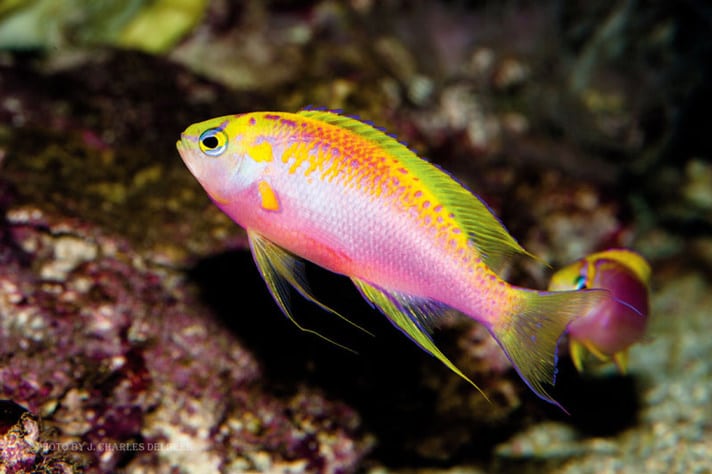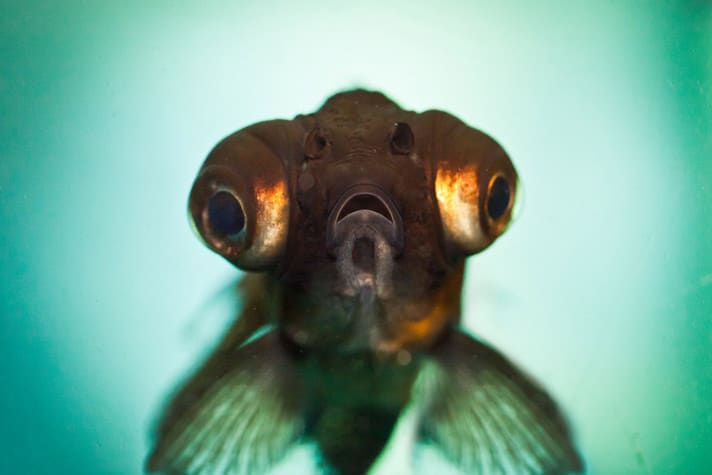For David “Shorty” Routh, it started during the recession. He got a call; a golf course near him was shutting down. The city was planning to drain the course’s pond and the koi swimming inside were facing certain death.
Could Routh save them?
In less than an hour the long-time koi enthusiast was at the course, armed with a 55-gallon tank, a net, and a strong will. Two weeks later, he and a crew of volunteers had rescued and rehomed more than 100 koi fish.
“If you were there with me, there’d be no way you couldn’t do anything,” he says. “There’d be no way you could let them sit in the mud and die.”
So began the Phoenix Koi Rescue. In the past eight or nine years, Routh alone has rescued more than 3,000 fish.
The group is one of many koi rescues around the country who save the fish from overpopulated ponds and foreclosed homes. They help homeowners who can’t maintain their existing ponds, and homebuyers who don’t know what to do with all the fish swimming around their new backyard. The rescue groups also help new parents who’ve decided babies and shallow water don’t mix, and people who want to rehome their pets when they move into assisted living.
When it comes to koi rescue, it’s a process. Volunteers usually have to drain the pond before they can salvage the fish, storing them in barrels, water tanks, aerated bags, and even aboveground swimming pools until they find the koi a new home. Rescues take anywhere from 20 minutes to three hours.
Some of the donors and adoptees give Phoenix Koi Rescue a donation. Others hand over their old equipment. Some just say thanks.
“Once someone bought me McDonald’s,” Routh says.
Carol Mathis of the Charlotte group The Koi Netters has helped arrange rescues as far away as New Jersey. In the past six years the group of five to ten hardcore volunteers has saved thousands of koi. Her biggest rescue was near the Virginia state line, where a whopping 690 goldfish and 72 koi were given new homes. One rescuer drove all the way to Raleigh to save a single goldfish.
Mathis is starting to get more calls from people who want to take in unwanted fish than calls for rescues—good thing since finding new homes for the koi isn’t always easy.
“I only let them go to ponds that can handle them,” she says. “Thirty-inch fish can’t just fit anywhere.”
Since the operations are entirely volunteer-run there’s not much time to screen potential recipients. Mathis says it takes just a few questions about their pond’s size, equipment and setup to tell whether they’ll be responsible rescuers.
“It’s a gut reaction,” she says.
Mathis has two ponds—totaling more than 25,000 gallons of water—which are home to about 130 koi. Each one has a personality, she says. They recognize people and they know when it’s feeding time. It doesn’t take them long to figure out she’s the one with the food.
That’s why for many people who are surrendering their fish, it’s hard to say goodbye.
“We’ve rescued koi that have been in people’s ponds for 25 years. They cry when we take them,” she says. ”We had one man who had to leave because he couldn’t watch us take away his fish.”
Then there was the home with the Jack Russell Terrier who used to “play” with his mom’s koi, running around the edge of the pond and splashing through the water at feeding time. When the woman’s husband passed away, she called Mathis’ group; she just couldn’t keep up with the maintenance.
During the rescue, the Jack Russell didn’t understand what was happening. She barked every time one of her fish was removed. When she realized they were being moved to a tank, she tried to figure out a way to climb in.
You form a bond with the koi, says Scott Sartorius, vice president of the Lone Star Koi Club in Houston. He has 35 fish in his pond. Every one has a name and a personality.
There’s Juliette (her partner Romeo has sadly passed), who was rescued eight years ago from a drainage ditch after heavy rains. She’s easily 30 to 40 years old, large and in charge.
“When it comes to feeding time you better get out of her way,” Sartorius says.
Then there’s Bar Code, a butterfly koi with big black dots along her back and giant white fins. She was rescued from a small stock tank she had outgrown. She’s gorgeous and inquisitive, always the first to sniff out a new member to the pond.
This is the reason they do it, rescuers say. The fish are like any other pet, important members of the family who deserve the chance to be given a new home.
“You don’t want to see a creature like that just get flushed down the toilet,” says Sartorius.

Helen Anne Travis is a freelance writer based in Tampa, FL. She also writes for CNN, The Guardian and The Globe and Mail.
Share:









